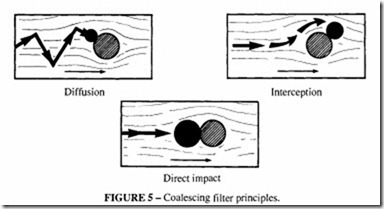Humidity control
Removal of water from the compressed air to a level where no new condensation can be formed in the compressed air system (ie the dew point is made lower than the ambient temperature) can have advantages in any industry and in some industries is essential.
In pneumatic tools, where the energy is extracted from the air expansively, the drop in temperature can result in the formation of ice in the expansion passages, which can be so serious as to choke the exhaust and stop the tool working. Further advantages of the use of dry compressed air are:
Air tools can be lubricated more efficiently.
Lubrication of all pneumatic components is improved when dry compressed air is used and servicing intervals are increased.
The use of dry air in spray painting eliminates any risk of damage to paint finish from water droplets.
In blast cleaning the reliability of equipment is improved and risks of icing under outdoor conditions are reduced.
In a dry compressed air system, there is no corrosion which could lead to leaks and loss of pressure.
There is a no need for draining of condensed water.
Air drying is also desirable in conditions of high ambient temperature and local humidity, where it may be difficult to secure sufficiently low compressed air temperatures to provide ideal conditions for air line filters. Different dew points are required depending upon the final use, the ambient temperature and humidity.
Pre-filters
Downstream from the compressor, aftercooler and receiver, a pre-filter can be installed. Their use is recommended where heavy contamination of oil, water or dirt is expected and is the first stage in air purification. Porous filter elements such as sintered bronze, sintered stainless steel, polythene or polypropylene with pore sizes of 5 to 25 micron will remove the heaviest contamination and protect the heat exchangers in the dryer. The air flow is from inside to out, with the coarse particles of dirt and scale retained on the inside of the filter. Oil, water and the remaining fine particulate matter then pass through the dryer to a sub-micron filter. The latter has become an essential part of achieving oil-free com pressed air.
Theory of coalescing filters
Oil is the most difficult contaminant to remove from a compressed air system. Modern techniques of oil separation use the principle of coalescing, which is a term used to describe the action of forcing aerosols to combine into droplets which become large enough and heavy enough to be drained away by gravity. There are three different processes occurring in a coalescing filter, depending on the particle size. These are illustrated in Figure 5.
1. Diffusion
Particles, both solid and aerosols from 0.001 to0.2 micron follow random motion, moving erratically within the airstream. When they collide with the filter media fibres, solid particles adhere strongly by intermolecular attraction, but liquid aerosols which do not adhere so strongly can migrate with the airstream and are then forced to agglomerate into larger particles. Diffusion is affected adversely when the particle velocity exceeds the ideal, which will vary with pressure, temperature and nature of the aerosol.
2. Interception
For particles in the range 0.2 to 2 micron, interception is the dominant mechanism. They follow the direction of the flow and are intercepted when they pass close to the media fibre where the inertia forces can be overcome and interception can occur. Provided that a smooth laminar flow is maintained, interception is not greatly affected by the variables
affecting diffusion. Filtration equipment should be designed to operate at air velocities well below those which could give rise to turbulence.
3. Direct impact
Particles larger than 2 micron have sufficient mass and inertia to leave the airstream as it deviates around the fibres and can impact directly on the fibres.
Filtration efficiency is measured by the percentage of contaminants of a particular micron size which are captured by the filter. Efficiency is important because it determines not only contaminant removal but also filter life. Selection of the appropriate grade of filter is important, because contaminant removal higher than required for the application results in higher filter costs. Generally the higher the efficiency the shorter the life. Filtration efficiency ranges from 90% to better than 99.99999%.
